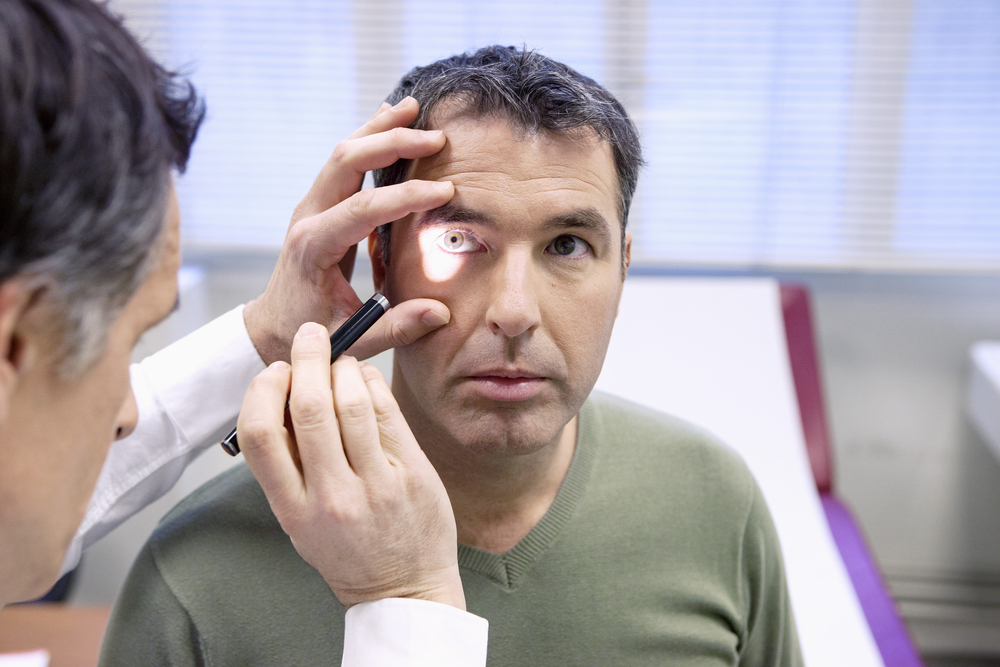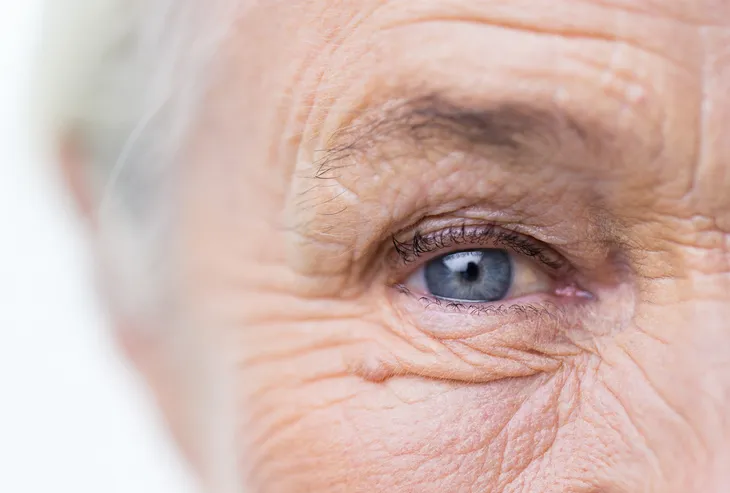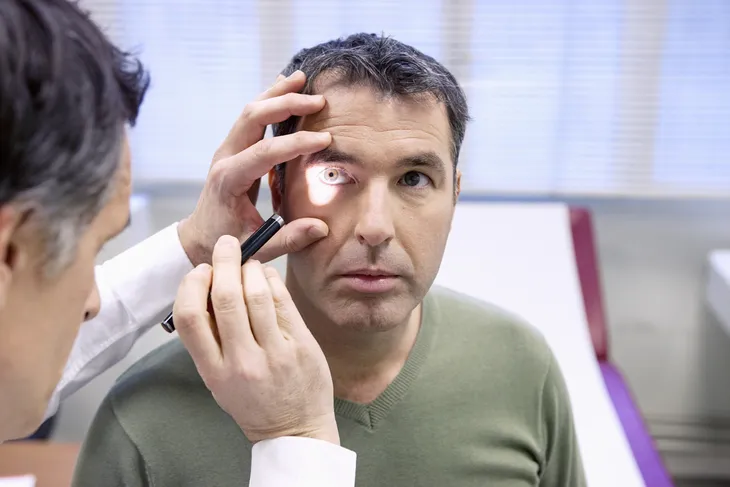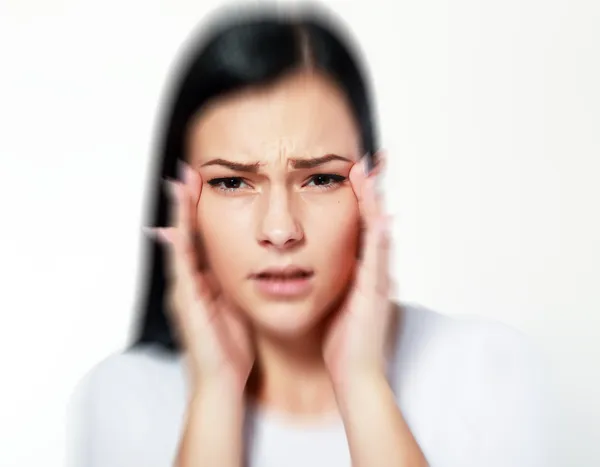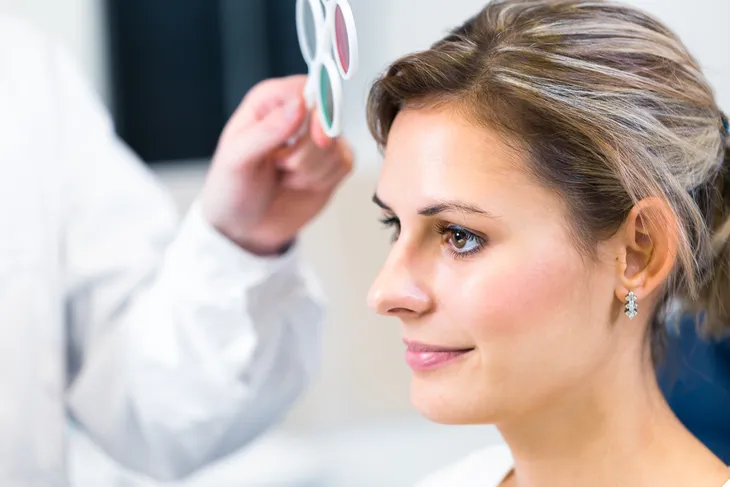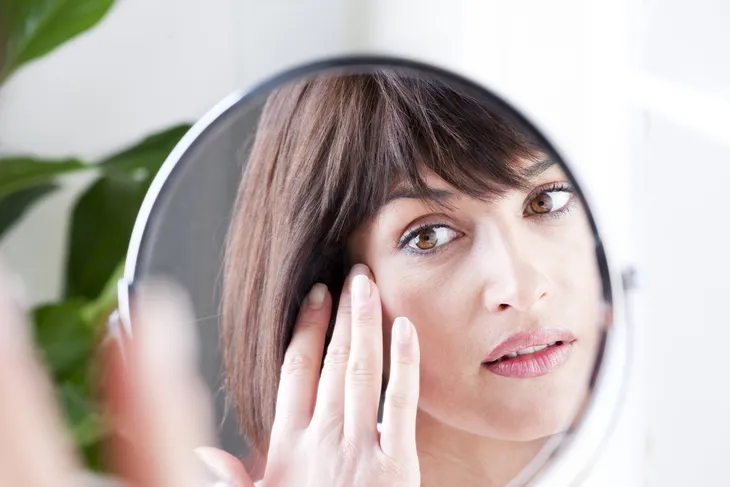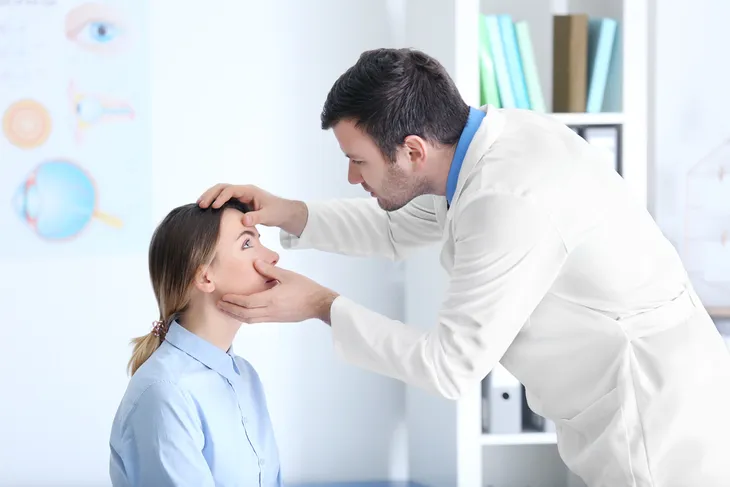Of our five senses, it’s hard to imagine one more important than vision. That’s why cataracts, or the clouding of vision as a result of proteins clumping together within the eye lens, is such a huge problem for people of all ages.
Cataracts can be the result of a wide range of lifestyle choices, from smoking regularly to eating poorly and using steroid-based medications. Of course, it’s also closely tied to poor eye health, such as spending too much time in the sun without proper eye protection (i.e., sunglasses) or being exposed to radiation for extended periods of time. But what, exactly, are the signs and symptoms of cataracts? In other words, how can one tell if cataracts may become a serious problem in the near or distant future?
Cloudy Vision
The most obvious way to determine if the eyes may be affected by cataracts is cloudy vision, or the appearance of fuzzy spots in the field of vision. At first, this may seem intermittent or fairly minor, but over time, the cloudiness can worsen, making daily activities, such as driving, going to work, or looking after the kids, less safe or convenient than before.
If left untreated, cloudy vision resulting from cataracts can result in vision becoming progressively more blurry and dim. This could make it difficult for you to safely operate a vehicle or even recognize faces. If you experience cloudy vision, it’s important to see your family doctor or an optometrist as soon as possible.
Night Vision Difficulties
For people who are starting to experience problems associated with cataracts, one of the first signs will be difficulty seeing at night. That’s because cataracts often cause the vision to darken or dim and may also lead to slight twinges of yellow or brown color in the eyesight.
At first, this may not present serious problems during the day, when there’s usually enough light to compensate for dim vision. However, the problem will be immediately problematic at night and presents significant dangers to a person who operates a vehicle or heavy machinery during the evening or early morning hours. If you begin to have trouble seeing at night or develop headaches from bright headlights or streetlights, talk to your family doctor or eye doctor right away.
“Patients often complain of a problem with night driving and reading road signs,” says Shoshana Ungerleider, MD, to Reader’s Digest. “If you notice these and/or frequent changes in your eyeglasses or contact lens prescription, make an appointment to see your eye doctor for an exam,” says Dr. Ungerleider.
Discomfort with Bright Lights
Generally speaking, light sensitivity is fairly normal. It’s hardly out of the ordinary to experience discomfort when going from a very dark room to a brightly lit room or having a flashlight directed at the eyes. But, light sensitivity shouldn’t go far beyond these occasional moments. “As a cataract develops, light does not have a clear path to the back of the eye, and it becomes increasingly difficult for a person to see clearly,” says James Schumer, MD, ophthalmologist to Reader’s Digest.
For people with emerging cataracts issues, light sensitivity will become exceedingly familiar and problematic; in fact, it can make seeing even relatively bright lights uncomfortable and even painful. This can be especially troubling at night when driving, as other cars pass by with their headlights on. If you notice you’re experiencing more difficulty with light sensitivity than in the past, talk to your physician or preferred eye specialist.
Seeing Halos
The appearance of halos, or ringlets of light surrounding bright sources of light (usually at night) is an immediate sign that one may be experiencing significant vision problems associated with cataracts.
This is because the clouding of the lens of the eye often leads to the diffraction of light passing into the eye. The result is the appearance of halos around lights, which can be incredibly distracting and a source of serious danger when operating a motor vehicle at night, particularly in well-lit environments such as city streets. If you begin to notice a halo effect, at night or during the day, speak to a vision expert right away.
New Glasses, Again
One clear sign that you may be experiencing vision problems associated with cataracts is having to update your prescription for eye glasses or contacts more frequently than in the past. Normally, these kinds of prescriptions should only need to be updated every couple of years, not every year or every 6-months.
If you find that you’re having to put new lenses in your glasses or re-new your contacts on a frequent basis, you should talk to your optometrist about cataracts. If that’s not the issue, your problem could be related to another type of eye condition that may require immediate attention.
Muddy Vision
If you begin experiencing eyesight issues associated with cataracts, your vision may not just appear cloudy or fuzzy. It might actually look rather muddy. That’s because the concentrations of proteins that gather around the lens of the eye through the cataract process often result in the vision becoming progressively more brown or even yellow, making it more and more difficult to see.
If left untreated, cataracts can lead the vision to become so obscured that it will almost seem as though one is wearing sunglasses when they’re not. While this may not be particularly problematic during the day, it will become very troublesome at night — just imagine trying to drive down a country road or highway wearing sunglasses! It’s a highly dangerous situation and should prompt an individual to speak with a vision expert immediately.
Double Vision
Have you ever tried putting on 3D glasses before the 3D television show or movie is ready? It can result in discoloration of the vision and the appearance of two or more images of a single object — in other words, double (or even triple or quadruple) vision.
Double vision, also referred to as diplopia, can be a sign that protein is building up around the lens of the eye, making it more difficult for the individual to see properly; this is known as cataracts. Reader’s Digest explains not to confuse the double vision effect of cataracts as the kind that occurs when there is improper alignment of the eyes. The double vision caused by cataracts will occur even when looking through just one eye. “At first, the cataract may cause cloudiness in one’s vision that will affect only a small part of the eye’s lens and may not be so noticeable,” says Dean Hart, OD, optometrist and professor at Columbia University’s School of Medicine to Reader’s Digest. Hart goes on to say, “But as the cataract grows in size, it will cloud more of the lens and will also distort the light passing through it. As a result, you may get double vision in a single eye if only that eye has the cataract.”
However, it could also be a sign of other serious health conditions, such corneal swelling, stroke, or the emergence of a brain tumor. These are all very concerning developments, so it’s imperative that you speak to a physician right away.
Yellow Tint
People with cataracts will suffer from cloudy and muddy vision, as we already discussed. This may also cause a yellow tint to develop in the vision. They won’t be able to see things like “real” whites. They’ll appear yellow instead. This is because the clumps of protein in the lens can turn yellow or brown. “The results in all the light coming into your eye having a yellow tint. It’s almost as though you are wearing ‘blue-blocker’ sunglasses, as advertised on TV, which block blue and violet light,” writes Healthline.
Trouble Reading Fine Print
It’s not uncommon for someone’s vision to fade as they age. There are many people who, after a certain age, have difficulty reading small print. While it’s not an immediate sign of cataracts, it can be one of several early warning signs. All About Vision compares the lens in an eye to that of a camera, it can change focus with light to help us see things both up close and far away.
“This lens is mostly comprised of water and protein, and the protein is arranged in such a way that allows light to pass through it,” writes Reader’s Digest. “Because cataracts cause the protein to clump together, small print may become difficult to discern in the eye’s refractive mirror.” The source also talked to Scott MacRae, MD, ophthalmologist and chairman of the Public Health Committee with the American Academy of Ophthalmology, who explains that blurry and waxy vision is also a definitive sign of cataracts. “Things start to look like there is a film in front of your eyes. The sharpness is gone,” he says to Reader’s Digest.
Difficulty Seeing Colors
People who begin to develop cataracts might find it hard to pick up certain colors, particularly blues and purples, explains WebMD. This is because cataracts can affect color vision by making some hues look faded. The clouding in the eye makes colors appear much less vibrant and causes everything to be muddied over. Also, as we previously discussed, your vision will develop a bit of a yellow or brownish tint.
“When people develop cataracts, there is a marked fading or yellowing of colors, which is sometimes noticed,” says Michael Nordlund, MD, of Cincinnati Eye Institute to Reader’s Digest. “One of the most prominent improvements in vision after cataract surgery is a marked improvement in color vision. Patients often comment following the surgery that they don’t ever remember seeing such vibrant colors. In fact, we are just restoring the color vision of their youth,” says Dr. Norlund.
Second Sight
WebMD describes one symptom of cataracts as second sight, which is basically when a person can temporarily see better than they used to. This is because the cataract acts as a stronger lens. “This phenomenon is called second sight, because people who may have once needed reading glasses find that they don’t need them anymore,” writes the source. Unfortunately, this small miracle is short lived, so don’t take it as a pass to skip the next eye exam. Eventually as the cataracts worsens your sight will worsen again.
“Since these are silent symptoms, it is important to have an annual eye exam because cataracts are diagnosed through high magnification and high illumination examination of the lens,” says Monica Nguyen, OD, to Reader’s Digest. “There is no proven approach to preventing cataracts, but there are preventative strategies, such as UV protection to reduce sunlight exposure, nutritional supplements (antioxidant vitamins and green leafy vegetables), and decreasing or quitting smoking,” says Nguyen.
When to See a Doctor
You should consult with an eye doctor whenever you notice any changes in your vision. You’ll need immediate attention if any of these changes seem sudden or serious, such as developing double vision, seeing flashes of light, sudden pain or headache, says Mayo Clinic. (Get informed on Best Ways to Prevent Cataracts).
Older adults need regular eye exams, especially those who work in front of screens for long periods of time or are noticing changes in their vision. Ophthalmologists can detect the presence of cataracts or if it’s coming down the pipeline at some point in the near future. But it’s important to remember that young people can develop cataracts as well, so it’s important to know the warning signs and have regular eye examinations. “Injury, certain medications, and genetic conditions can result in cataracts, even in the very young,” writes Healthline.
